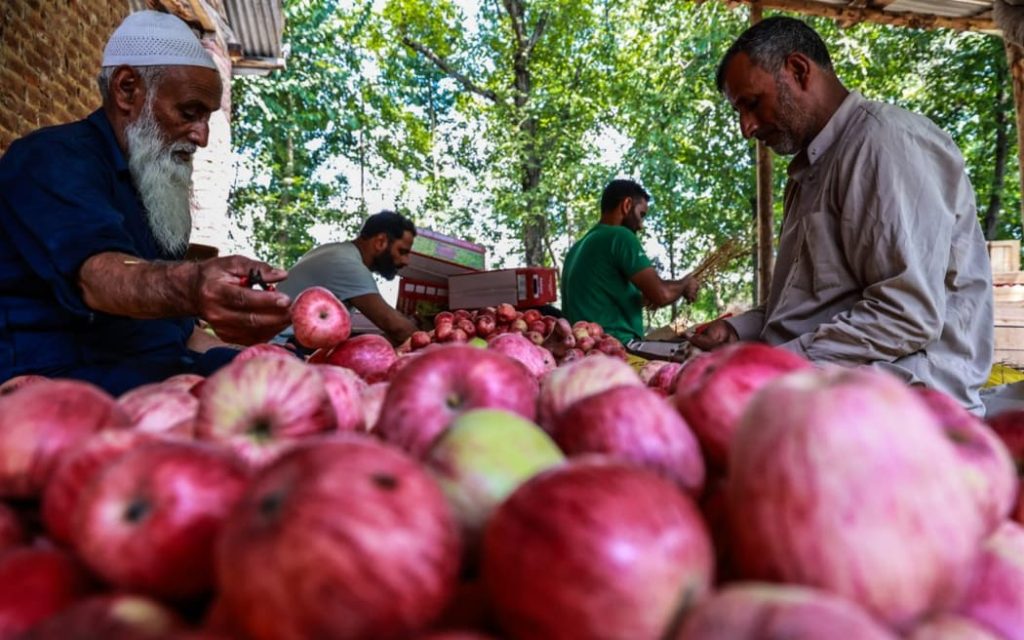The world’s tallest single-arch rail bridge is poised to link Indian-administered Kashmir with the rest of India via train for the first time. This ambitious infrastructure project, spanning the Chenab River, stands 35 meters taller than the Eiffel Tower and is situated over a deep ravine in Jammu’s Reasi district. After over two decades of construction, the bridge is nearing completion, with the inaugural train journey expected soon between Bakkal and Kauri areas.
This bridge is a crucial component of a 272-kilometer all-weather railway line connecting Jammu to the Kashmir Valley, though no specific completion date has been set. The current road link to Kashmir often faces disruptions during winter due to heavy snowfall, making this rail connection a significant development.
Strategically, experts view this railway line as enhancing India’s position in the sensitive border region. The Himalayan region of Kashmir has long been a point of contention between India and Pakistan, with both countries claiming the territory in full but controlling only parts. Since their independence in 1947, the nuclear-armed neighbors have fought two wars over Kashmir, and ongoing insurgency in the Indian-administered area has led to substantial loss of life and a significant military presence.

“The rail bridge will permit the transport of military personnel and equipment around the year to the border areas,” said Giridhar Rajagopalan, deputy managing director of Afcons Infrastructure, the company responsible for constructing the bridge. This development is anticipated to bolster India’s strategic objectives, including managing potential threats from Pakistan and China, with whom India has tense relations, according to strategic affairs expert Shruti Pandalai.
Local sentiment about the bridge project is mixed. Some residents, who preferred to remain anonymous, believe that improved transport links will benefit the region. However, there are concerns that the project may serve as a means for the Indian government to assert greater control over the valley.
The railway line is part of a broader infrastructural expansion by Prime Minister Narendra Modi’s administration, which in 2019 revoked Jammu and Kashmir’s special status and restructured the state into two federally administered territories. This move was accompanied by a stringent security clampdown, which provoked significant unrest. Since then, the government has introduced several administrative changes aimed at integrating Kashmir more closely with India.
Pandalai remarks that while India’s plans for the region are inevitably influenced by strategic interests, they must also consider “local needs and context.”
The Chenab bridge project, approved in 2003, encountered numerous delays due to the region’s challenging topography, safety issues, and legal disputes. Engineers had to access the remote site on foot or by mule during the early construction phases. The Himalayas, being a relatively young mountain range, presented complex geotechnical challenges. The bridge is located in a highly seismic zone, necessitating extensive exploration studies and design modifications to ensure it could withstand simulated wind speeds of up to 266 km/h.
“Logistics was another major challenge given the inaccessibility of the location and the narrow roads. Many of the components of the bridge were built and fabricated on site,” Rajagopalan explained. In addition to engineering challenges, the bridge was designed to be blast-proof. Afcons claims that it can endure a blast equivalent to 40 kilograms of TNT, allowing trains to continue operating at reduced speeds even if parts of the bridge are damaged.
The railway line is expected to provide a significant boost to the region’s economy. Currently, poor winter connectivity hampers businesses, particularly those dependent on perishable goods. About 70% of Kashmiris rely on fruit cultivation, as noted by the Observer Research Foundation.

Ubair Shah, who manages a major cold storage facility in Pulwama district, anticipates substantial benefits from the rail link. His facility processes plums and apples for markets in northern India, and the new railway line could potentially open up access to southern markets, increasing farmers’ incomes. However, Shah notes that logistical issues, such as the 50-kilometer distance to the nearest station, may hinder quick adoption of railway cargo for perishable goods.
Tourism is another area poised to benefit from the new rail connection. Kashmir’s stunning tourist attractions have seen increasing visitor numbers despite the region’s remoteness. A direct train service between Jammu and Srinagar could reduce travel time and costs, potentially boosting tourism further.
Despite these advantages, challenges remain. Kashmir continues to experience violence, with recent militant activities raising concerns. In June, a deadly attack on Hindu pilgrims in Reasi, the site of the bridge, underscored the ongoing security issues. Several attacks on the army and civilians have also been reported.
Experts caution that such incidents highlight the fragile nature of peace in the region. Without lasting stability, the potential economic benefits of the new connectivity projects may be limited.
Source credit: rnz.co.nz
This story was first published by the BBC.
